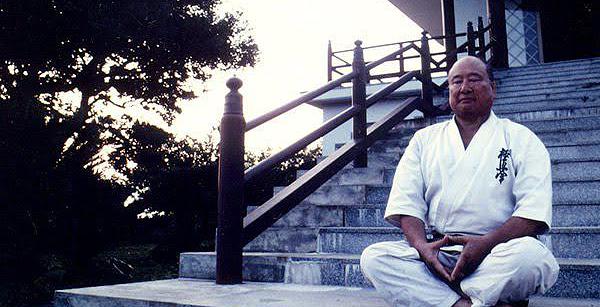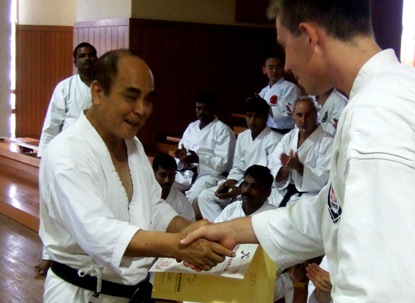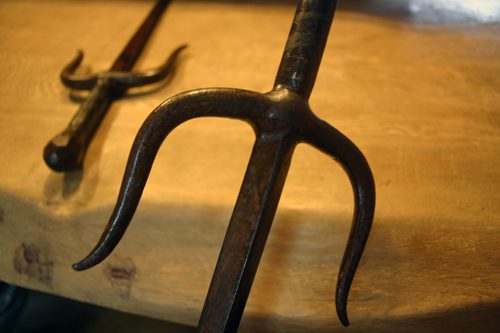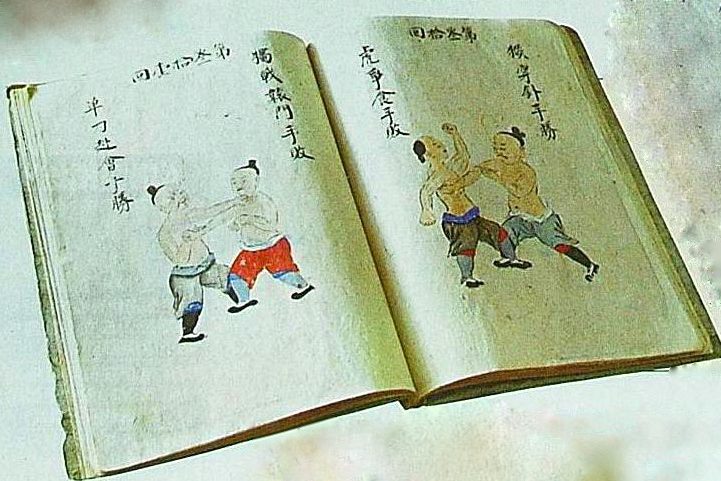Do you feel joint pain when practicing Karate?
Perhaps you have osteoarthritis.
Osteoarthritis is a scientific way to say “chronic joint inflammation”.
Usually, people older than 50 get this condition. But it’s common for people in their 20s and 30s to get it too if they do contact sports.
Karate is no exception.
In Karate, the most common joints affected by osteoarthritis are the knees and hips.
If your knees and hips hurt from deep stances and high kicks, you might have osteoarthritis.
But don’t worry – you’re in good company!
Masutatsu Oyama, the legendary founder of Kyokushin Karate, had terrible osteoarthritis. Despite this, he went on to become one of the world’s most iconic Karate fighters.
You can fight osteoarthritis too.
So, what causes osteoarthritis?
Although osteoarthritis is more common in older people, aging isn’t a huge factor.
Instead, it’s the heavy impact and rotational forces on your joint that causes it. This is why people in martial arts and contact sports get osteoarthritis more often.
Simply put – your joint cartilage breaks down faster than it recovers.
Over time, this damage adds up.
Reasons for this include:
- High-impact and torsional loads on the knees and hips
- Repetitive moves that stress the joints
- Injuring your joint(s) in the past
- Poor muscle stabilization around the joint
- Hard-style training that leaves little time for recovery
- Genetic abnormality in the joint structure
- Stress on one side of the joint due to muscle imbalance
These reasons are clues to how you can practice Karate with osteoarthritis.
10 Ways to Practice Karate with Osteoarthritis
If you’re still reading, it probably means you (or someone you know) suffers from osteoarthritis.
Let’s reclaim your Karate body!
In a nutshell, here’s the action plan:
- First, stabilize the joint structure.
- Secondly, reduce wear and tear in the joint.
- Lastly, practice Karate intelligently.
Here are 10 points that will help you:
#1 Strengthen the Muscles that Support Your Joint
When you have weak surrounding muscles, you rely on the joint to bear the whole load.
This is catastrophy for your cartilage.
What you need to do instead is to strengthen the muscles supporting your joint structure. Rely on them for stabilization.
For example, here’s a quick exercise for your hips and knees.
Double/Single Leg Bridges

Explanation: Lay on your back with your knees bent. Place your feet flat on the ground.
Then, while keeping your back straight, lift your butt upwards. Go slowly back down again.
Repeat for 4 to 6 reps (on the first try). If it feels OK, try another set, then one leg.
There are many exercises you can do.
For best results, ask a physical therapist or personal trainer to help you design an individual training program.
#2 Mobility Exercises
It’s important to move your joint.
Some people think stretching is the solution, but that’s far from enough.
You see, the real problem is not flexibility…
It’s MOBILITY!
Mobility is your ability to move a joint through its full range of motion. You could call this “active” or “dynamic” flexibility.
I actually have an online program called Karate Flexibility & Mobility with 50 great exercises that I use myself on a daily basis.
Here’s an example:
You can download all exercises HERE.
#3 Use Joint Support
There are several tools you can use to support your joints.
Elastic sleeves and compressions garments are great for this purpose.
Why? Because they aid the muscles that protect your joint.
Also, wearing a brace helps you maintain the correct joint structure and alignment – even when you’re exhausted.
But don’t wear it all the time. You need to train the muscles without support too.
#4 Stay Fit & Active
Being overweight will speed up your cartilage wear, especially if combined with Karate practice.
So, unless you’re in great shape, ease down on the Karate training. Instead, take up a low impact exercise (like walking or swimming) to drop a few pounds first.
Then, gradually reintroduce Karate training while maintaining your active lifestyle.
As side effect, you might get a 6-pack.
And I’m not talking about beer. 😉
#5 Talk to Your Sensei, Doctor & Physical Therapist
Dealing with osteoarthritis involves making adjustments to your regular Karate training.
This means you need a dialogue with your sensei – and preferably communicate with a doctor or physical therapist too, so they’re all on the same page.
Because trust me – you WILL need to alter your Karate training.
Or suffer the consequences.
#6 Modify (or Avoid) Karate Techniques

How exactly will you need to alter your Karate training?
Well, it depends on how severe your osteoarthritis is.
For some people, it might be enough to tone down the intensity. If deep stances hurt your knees, adopt a stance that’s less deep. For example, change your “zenkutsu dachi” (front stance) to “han-zenkutsu dachi” (half front stance).
For others, it might be necessary to avoid certain techniques altogether.
It’s case-by-case basis.
#7 Warm Up Longer Before Karate Training
Before Karate training, warm up the joint affected by osteoarthritis extra.
The regular warm up at the start of class is not enough. You need longer time.
Focus on easier versions of Karate techniques that normally cause discomfort.
For example; if kicking causes some discomfort, try drawing small circles with your foot. The rotation in your hip socket prepares you for greater range of motion. Then, swing your leg in a bigger circle. Then, do a gentle kick. Work your way up.
The key is “baby steps”.
#8 Maintain Proper Form & Posture
Always maintain proper form when performing your techniques.
Contrary to popular belief, proper form is not about aesthetics. It’s about function!
Correct structural alignment and posture ensures that integrity of your joint is kept intact. The moment you’re out of form, you cause unnecessary torsion loads that aggravate the joint pain.
If you’re too tired to maintain correct form, ask for permission to go slower or simply take a break.
A good instructor will understand.
#9 Anti-Inflammatory Medication & Treatment
Even if you follow all the steps above, your joint can still get inflamed.
Why? Because life is not fair.
To deal with this, you might need anti-inflammatory drugs. Ask your doctor what’s best for you.
Personally, I prefer topical treatment, like cream and gel, over pills and injections.
But try not to become dependant on it.
#10 Switch to a Different Style of Karate

I have to be honest.
Although studies show that Karate is less damaging on your joints than other martial arts, some Karate styles are more unforgiving than others.
Some Okinawan styles in particular, like Uechi-ryu, have waaaaaay less physical demands on your joints compared to modern Japanese styles like Shotokan.
If your current style worsens your osteoarthritis, consider switching.
What’s most important – “your style” or your health?
To me, the answer is easy…
BONUS! #11 Stay Positive 🙂
Managing osteoarthritis while training can be depressing.
Changing the way you practice Karate can also be frustrating.
BUT STAY POSITIVE!
Don’t look back to the times when you did Karate before osteoarthritis. Take this as an opportunity to let your Karate evolve into something different, more sophisticated.
Use your pain as source for growth.
That’s the Karate spirit.
Good luck!



55 Comments